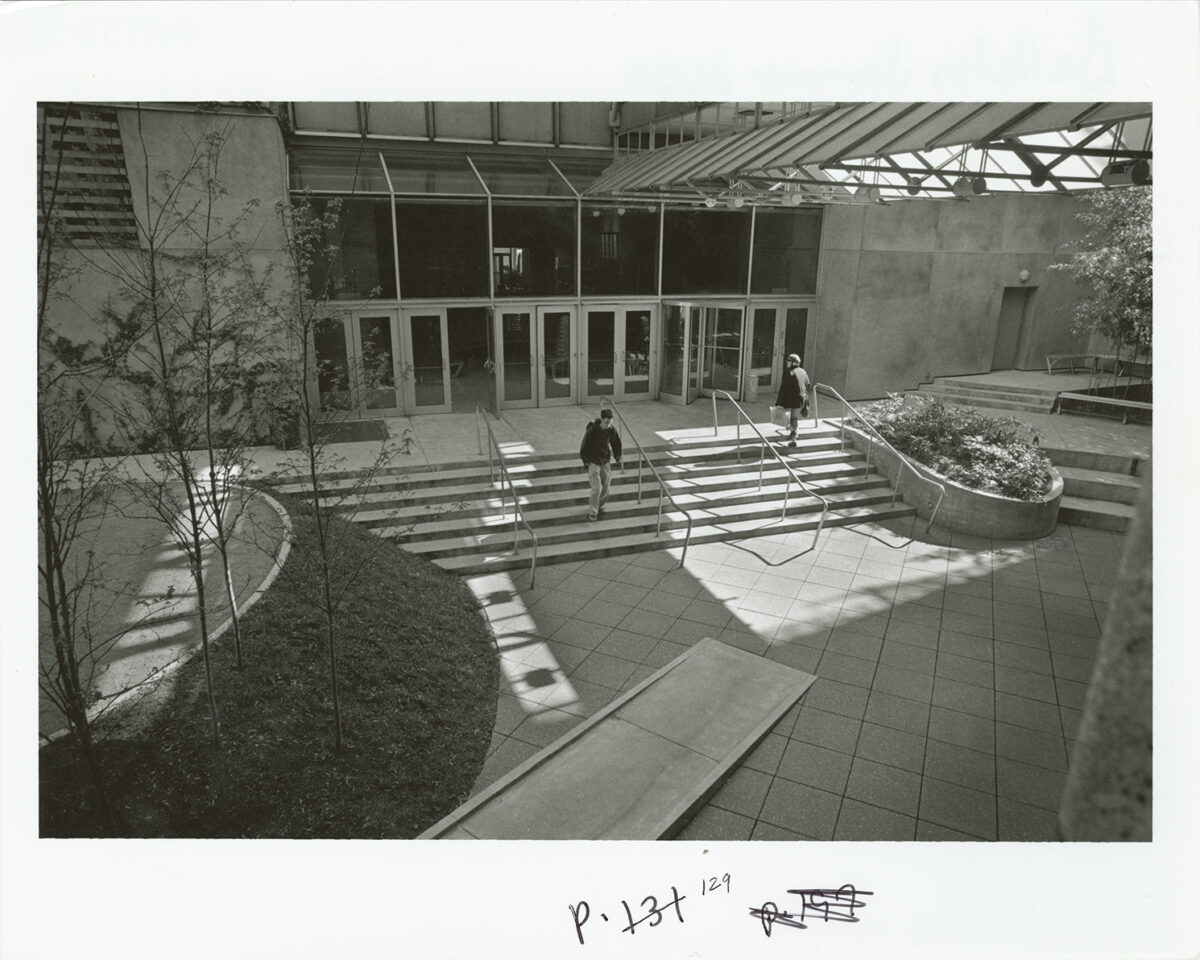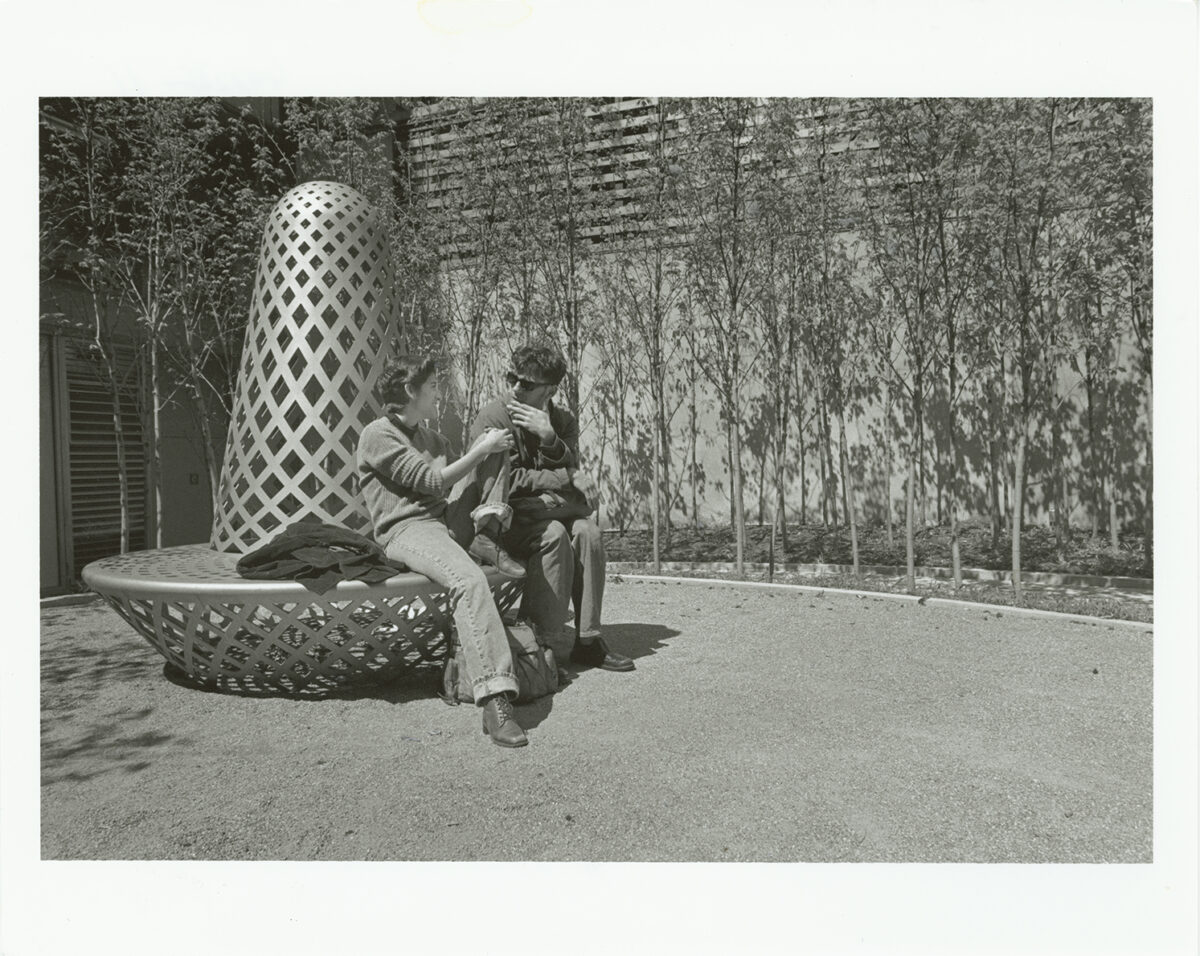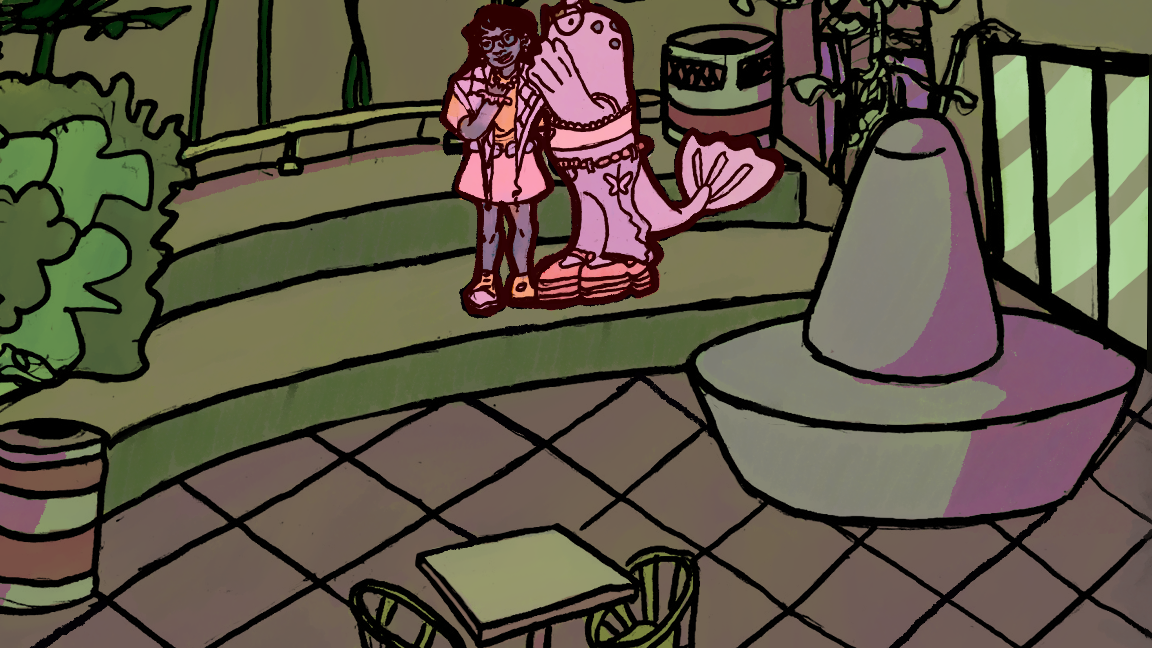The New Review is a biweekly series where writer Kayley Cassidy will examine an art installation or exhibition close to The New School campus. This week, she stayed on campus, reflecting on The New School’s past and contemplating its present in the Eugene Lang Vera List Courtyard.
In a city that never stops moving and has a life of its own, trying to make the time to look at installations or exhibitions close to campus can be difficult. We wonder where the time went as we look at Canvas and reflect on how we swore it was January only yesterday. For Lang students and faculty, we walk through the courtyard space when running late to class or are too lazy to walk to the West 11th Street entrance. But among the chaos of New School life, consider thinking about the past that contributed to the chaos, and move yourself outdoors to the Vera List Courtyard.
While you may call it the Lang courtyard, the space was in fact designed in 1997 in honor of American art collector and philanthropist Vera List. Curator Kathleen Goncharov explains in the book “I Stand in My Place With My Own Day Here: Site-Specific Art at The New School” that “Puryear and Van Valkenburgh’s garden design, which integrates sculptural presence and practical function to create a contemplative meeting space in the midst of a busy urban institution, has been a particularly apt way in which to honor Vera’s legacy. Vera List Courtyard was dedicated on November 2, 1997.”

Van Valkenburgh, a landscape architect, and Puryear, an artist, transformed a walkway between buildings into a space intended for “small outdoor receptions, performances, and ceremonies.” New School students could argue this space is used for anything but educational purposes. While the space holds school events, it is more likely to be used for lounge purposes, a place to organize demonstrations, and for some, it’s their graffiti canvas.
Staggered levels in the courtyard create a sense of depth; seating arrangements complement steel benches contrasted with cement-made steps that students often use as seating. There is a playfulness juxtaposed with the witch-hat looking benches often made fun of by students, and the curved ramp surrounded by rock and trees taking up one part of the space.
But in this sense of campus community, we are surrounded by harsh, gray cement walls that can feel constricting. While it is intended as a space for campus life and is a space that life occupies, it’s not the most comfortable — which poses the question, what made this hostile architecture worth the 2.6 million dollars that was paid for it “through private contributions,” according to the dedication.
Not only does the uncomfortable space serve the present, but it sets a vivid reminder of a revolutionary past that may not be seen in the school’s image today. A school with a habit for art dealing — a collection consisting of about 2,000 works of art — contradicts a school that prides itself on being “new” and disruptive of the capitalist status-quo. In fact, a school that was never intended to be a university contradicts its past entirely.
There was a time when education at The New School wasn’t broken down into undergraduate and graduate levels, but it was a place for adults to consistently receive education throughout the course of their lives. In the university website’s “About” section, it’s explained when it was established in 1919, the founders “created a school of advanced adult education to bring creative scholars together with citizens interested in improving their understanding of the key issues of the day through active questioning, debate, and discussion.”
As you sit in this courtyard, I want you to glance around and think about the difference between the school’s intended goals and the school in which you sit in now. Allow yourself to question the bench in the center of the spiral ramp where one of the only forms of nature that exists in the space are red maple trees that are dying, and poignant greenery that overcomes the junction in the spring. Let the oval terrace be your stage. The audience, your peers who sit on the steps of the courtyard. Simulate a socratic seminar — talk about the things that bother you at a school you pay tuition for and contemplate what they should be doing better.
Inhale the crisp air lingering in the atmosphere. Sit at the tables and chairs on the lower level and let them be your conference table to reimagine the future of the school with your friends. Or sit at the benches along the walls, where you can watch the campus come to life from a distance and think about the community you feel is missing and that the school should work on being more inclusive of.
Reflect on where you are now, and think about the campus as a space — remember the students that came before you and how you all sought this place for some of the same reasons. Listen to the sounds of students playing jazz in the courtyard when the sun starts to set and the weather gets warm, eavesdrop on the class spending time outside, watch a one-on-one conversation between a student and professor, catch up with a friend over coffee and let the breeze carry the conversation. Use the echoey cement walls as your speaker when you want to protest something the university fails to recognize.

Lean against that metal bench on the oval terrace aestheticized in the depths of The New School affirmations page, and reimagine a school that can actually feel new.
In this space, you’ll begin to realize that maybe The New School isn’t so new after all, and that as progressive as it may advertise, there is still some serious work that needs to be done. But it starts with observation and conversation. Really examine the institution as a whole and converse in these spaces that may not feel comfortable all the time but were intended for you to exist in.







